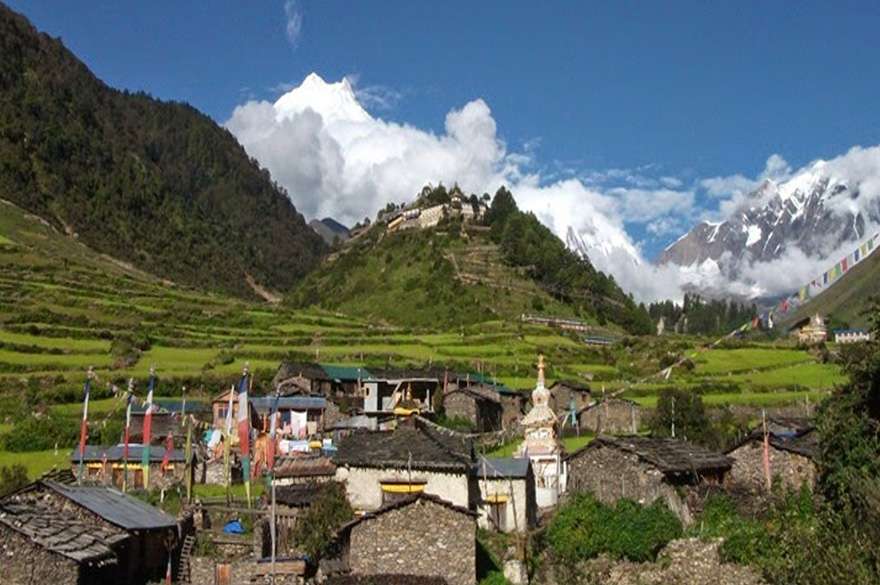Everest Base Camp Trek: A Journey I’ll Never Forget

Strong 8k brings an ultra-HD IPTV experience to your living room and your pocket.
From Lukla to the base of the world’s highest mountain here is how it really feels.
I have walked the trail to Everest Base Camp more times than I can count. But every single time, it feels new. The mountains don’t change, but the people, the weather, the little things along the way they always bring fresh energy. If you’re thinking about doing this trek, let me share what it’s really like through my eyes, not as a travel agent or writer, but as someone who’s been guiding people here for years.
The Thrill Begins in Lukla
The trek usually starts with a short flight from Kathmandu to Lukla. This tiny airport, sitting on a slope, is exciting on its own. The landing is always a mix of fear and fun for travelers. Once you get off the plane, the cool mountain air hits you, and the narrow trail begins right away.
From Lukla, we hike to Phakding, a small village by the Dudh Koshi River. This first day is easy, just a warm-up with lovely views and prayer wheels spinning in the wind. You’ll see colorful stones with Buddhist mantras and pass cheerful kids saying “Namaste”.
Reaching Namche Bazaar
The next stop is Namche Bazaar, the main trading town in the Khumbu region. This part of the trail is tougher. It climbs steeply through pine forests and suspension bridges, including the famous Hillary Bridge. When we finally reach Namche, everyone feels that first taste of altitude.
Namche is where trekkers rest for a day to get used to the height. There is internet, bakeries, gear shops, and even a small Sherpa museum. In the mornings, I often take trekkers to the Everest View Hotel for tea and a look at Everest if the sky is clear. It’s one of the most peaceful views on the trip.
The Trail Gets Quiet and Cold
After Namche, we continue to Tengboche, where there’s a beautiful monastery. I always tell people to sit quietly during the evening prayers it is something you don’t forget. The mountain views from here include Ama Dablam, Thamserku, and, of course, the tip of Everest.
As we move higher to Dingboche and then Lobuche, the air gets thinner, and the villages grow smaller. Fewer trees, more yaks, and a lot more silence. Every step feels slower now, and even tying shoelaces takes effort. But it’s also when people get closer. Trekking together, talking less but sharing more.
At Dingboche, we rest another day. This helps avoid altitude sickness. I usually guide a short hike to a nearby ridge with a view of Island Peak. It helps the body adjust and clears the mind.
The Big Day: Everest Base Camp
Reaching Everest Base Camp is a long day from Gorakshep, the last settlement before base camp. The path is rocky, passing glacier moraines and ice. It’s not the most beautiful part of the trail, but it’s raw and powerful. When we finally reach base camp, marked by colorful flags and rocks, people react differently. Some cheer, some cry, some just stand still. It’s not about the view, it’s about the journey.
In spring, you might see real climbing tents and meet mountaineers getting ready for the summit. In autumn, it's quieter but just as special.
Don’t Miss Kalapatthar
The next morning, we hike up Kalapatthar, a viewpoint that gives the best sunrise view of Mount Everest. It’s not easy early morning, freezing cold, and steep but worth every step. Watching the first light hit Everest is something I can’t describe. I’ve seen it many times, but it still gives me goosebumps.
Culture Along the Way
One thing I always tell people: the mountains are amazing, but the Sherpa people are the heart of this trek. Their kindness, strength, and calm way of living inspire me every time. From small tea houses run by families to old women spinning prayer wheels, the culture is everywhere.
We pass mani walls, chortens, and prayer flags fluttering in the wind. Every time we stop for tea or a night’s rest, there's a chance to learn how they live, what they believe, how they smile through the cold.
What You Need to Know
- Best time: March to May, and late September to early December.
- Permits: You’ll need the Sagarmatha National Park permit and a TIMS card.
- Accommodation: Teahouses along the way offer simple rooms and local meals.
- Physical preparation: Train with hikes and cardio before you come.
- Altitude awareness: Go slow, drink water, and don’t ignore headaches.
Every Everest Base Camp trek is a mix of sweat, friendship, and discovery. As a guide, I have watched people change on this trail becoming stronger, more patient, more thankful. It’s not just a trek; it’s a reminder of how far your feet, your heart, and your mind can take you.
If you are thinking about it, don’t overthink. Just come prepared, and let the trail do the rest. I’ll see you up there.
Note: IndiBlogHub features both user-submitted and editorial content. We do not verify third-party contributions. Read our Disclaimer and Privacy Policyfor details.






